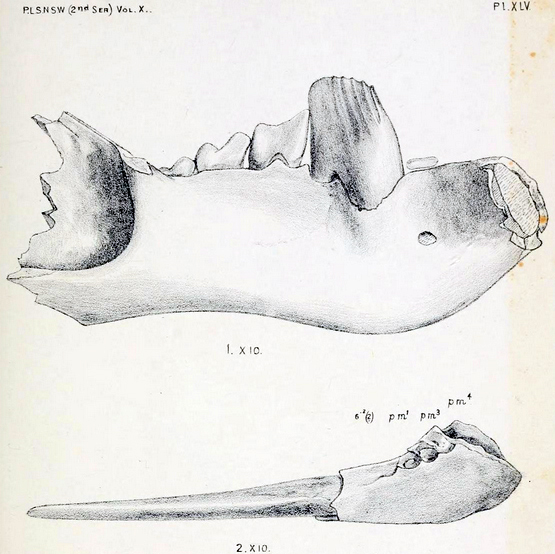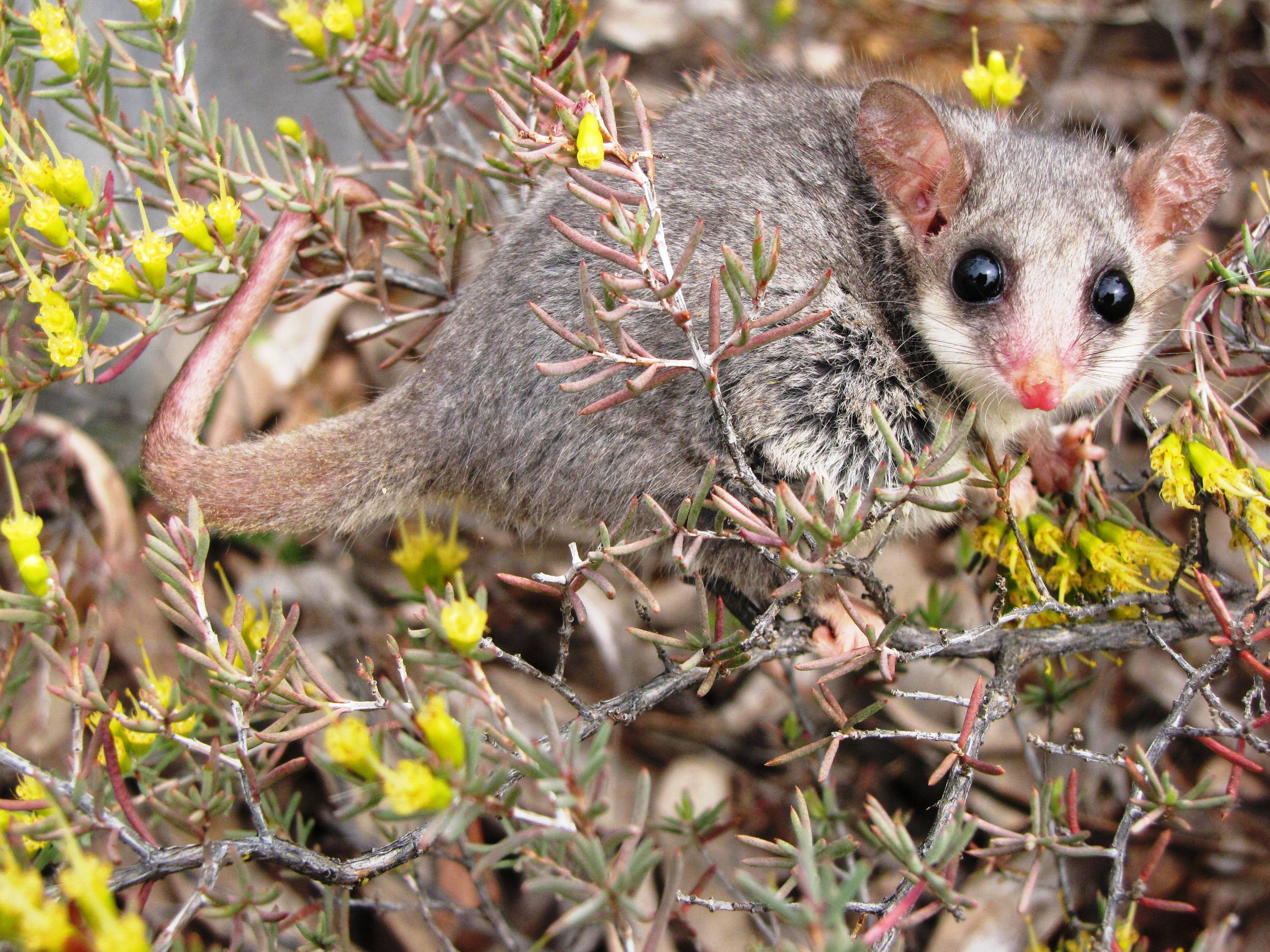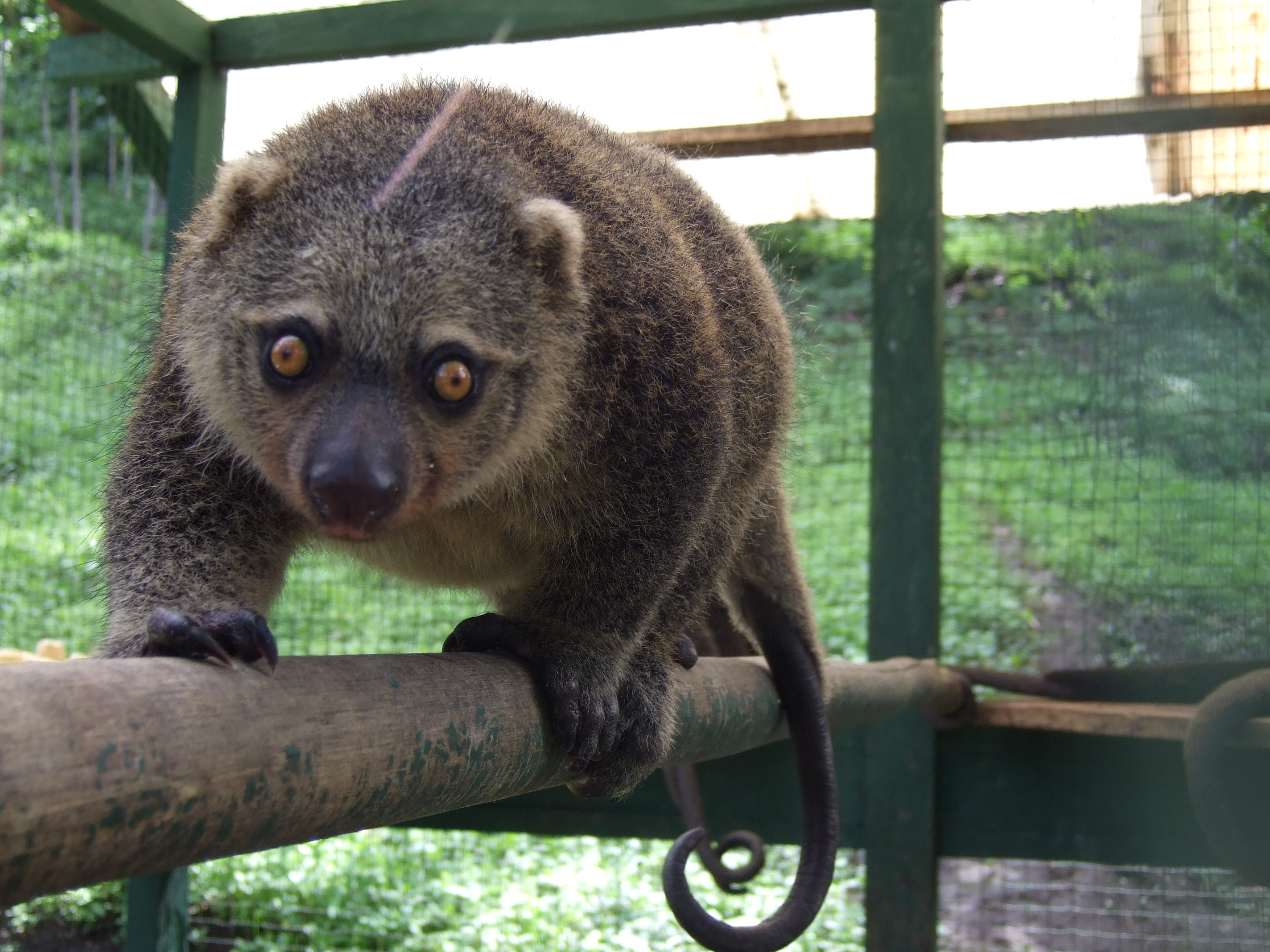|
Burramyidae
The pygmy possums are a family of small possums that together form the marsupial family Burramyidae. The five extant species of pygmy possum are grouped into two genera. Four of the species are endemic to Australia, with one species also co-occurring in Papua New Guinea and Indonesia. Pygmy possums range in length from about , and usually weigh between . They are nocturnal and omnivorous, living on a diet of invertebrates, fruit, seed, nectar and pollen. They are excellent climbers, due in part to their prehensile tails. Although they cannot glide like some possums, some species can leap long distances. They have a prehensile tail for grabbing branches, but spend most of their time on the ground. Conservation International (CI) and the Indonesian Institute of Sciences (LIPI) reported the possible discovery of a new species of ''Cercartetus'' pygmy possum upon visit to the Foja Mountains in June 2007. The mountain pygmy possum is the only mammal restricted to the alpine and sub ... [...More Info...] [...Related Items...] OR: [Wikipedia] [Google] [Baidu] |
Western Pygmy Possum
The western pygmy possum (''Cercartetus concinnus''), also known as the southwestern pygmy possum or the ''mundarda'', is a small marsupial found in Australia. Genetic studies indicate its closest relative is probably the eastern pygmy possum, from which its ancestors diverged around eight million years ago. Taxonomy John Gould provided the first description of ''Cercartetus concinnus'', which was read before the Zoological Society of London and published in 1845. Gould assigned the new species to the genus ''Dromicia'', recognising an affinity with a previously described species found in Tasmania. The animal was also described in the same year as ''Phalangista'' (''Dromicia'') ''neillii'' by G. R. Waterhouse, recognised as a synonym of the species. Description The western pygmy possum is unusual in ''Cercartetus'', as, unlike its grey relatives, the fur over most of its body is a bright cinnamon colour. It has pure white underparts, which also distinguishes it from its relati ... [...More Info...] [...Related Items...] OR: [Wikipedia] [Google] [Baidu] |
Mountain Pygmy Possum
The mountain pygmy possum (''Burramys parvus''); also simply known as the burramys, is a small, mouse-sized (weighs ) nocturnal marsupial of Australia found in dense alpine rock screes and boulder fields, mainly southern Victoria and around Mount Kosciuszko in Kosciuszko National Park in New South Wales at elevations from . At almost , its prehensile tail is longer than its combined head and body length. Its diet consists of insects (such as the bogong moth), fleshy fruits, nuts, nectar and seeds. Its body is covered in a thick coat of fine grey fur except for its stomach, which is cream coloured; its tail is hairless. On the underside of the female's body is a pouch containing four teats. This possum is the only extant species in the genus ''Burramys''. It is also the only Australian mammal restricted to alpine habitat. Discovery The mountain pygmy possum was first discovered in the fossil record in 1895 when a portion of the jaw and skull bones were found in the Wombeyan Ca ... [...More Info...] [...Related Items...] OR: [Wikipedia] [Google] [Baidu] |
Mountain Pygmy Possum
The mountain pygmy possum (''Burramys parvus''); also simply known as the burramys, is a small, mouse-sized (weighs ) nocturnal marsupial of Australia found in dense alpine rock screes and boulder fields, mainly southern Victoria and around Mount Kosciuszko in Kosciuszko National Park in New South Wales at elevations from . At almost , its prehensile tail is longer than its combined head and body length. Its diet consists of insects (such as the bogong moth), fleshy fruits, nuts, nectar and seeds. Its body is covered in a thick coat of fine grey fur except for its stomach, which is cream coloured; its tail is hairless. On the underside of the female's body is a pouch containing four teats. This possum is the only extant species in the genus ''Burramys''. It is also the only Australian mammal restricted to alpine habitat. Discovery The mountain pygmy possum was first discovered in the fossil record in 1895 when a portion of the jaw and skull bones were found in the Wombeyan Ca ... [...More Info...] [...Related Items...] OR: [Wikipedia] [Google] [Baidu] |
Eastern Pygmy Possum
The eastern pygmy possum (''Cercartetus nanus'') is a diprotodont marsupial of south-eastern Australia. Occurring from southern Queensland to eastern South Australia and also Tasmania, it is found in a range of habitats, including rainforest, sclerophyll forest, woodland and heath. Taxonomy and nomenclature The eastern pygmy possum is the type species of the genus ''Cercartetus'' (family Burramyidae), and was first described as ''Phalangista nana'' with the specific name meaning ‘dwarf’ in Latin. Currently, the authority for the specific name is widely accepted as Desmarest 1818, but in a review recently published, it was pointed out that an earlier version of Desmarest's account was published in 1817. Names synonymous with ''Cercartetus nanus'' are ''Phalangista glirifomis'' (Bell, 1828) and ''Dromicia britta'' (Wood Jones, 1925). These coincide with the two subspecies ''C. n. nanus'' (Desmarest, 1818) (the Tasmanian subspecies) and ''C. n. unicolor'' (Krefft, 1863) (the m ... [...More Info...] [...Related Items...] OR: [Wikipedia] [Google] [Baidu] |
Tasmanian Pygmy Possum
The Tasmanian pygmy possum (''Cercartetus lepidus''), also known as the little pygmy possum or tiny pygmy possum, is the world's smallest Phalangeriformes, possum. It was first described by Oldfield Thomas in 1888, after he identified that a museum specimen labelled as an eastern pygmy possum in fact represented a species then unknown to science. The holotype resides in the Natural History Museum, London, Natural History Museum in London. Description Although it is a marsupial, the Tasmanian pygmy possum superficially resembles a dormouse, and it is the smallest of all the known species of Phalangeriformes, possum. Adults range from in head-body length, with a tail, and weigh just . Their fur is soft and thick, and is fawn in colour over most of the body, fading to a pale grey on the underparts. The snout is short with long whiskers, and the eyes are directed forwards and surrounded by slightly darker fur, although without the conspicuous black rings seen on other pygmy possum ... [...More Info...] [...Related Items...] OR: [Wikipedia] [Google] [Baidu] |
Phalangeriformes
Phalangeriformes is a paraphyletic suborder of about 70 species of small to medium-sized arboreal marsupials native to Australia, New Guinea, and Sulawesi. The species are commonly known as possums, gliders, and cuscus. The common name "possum" for various Phalangeriformes species derives from the creatures' resemblance to the opossums of the Americas (the term comes from Powhatan language ''aposoum'' "white animal", from Proto-Algonquian *''wa·p-aʔɬemwa'' "white dog"). However, although opossums are also marsupials, Australasian possums are more closely related to other Australasian marsupials such as kangaroos. Phalangeriformes are quadrupedal diprotodont marsupials with long tails. The smallest species, indeed the smallest diprotodont marsupial, is the Tasmanian pygmy possum, with an adult head-body length of and a weight of . The largest are the two species of bear cuscus, which may exceed . Phalangeriformes species are typically nocturnal and at least partially arbo ... [...More Info...] [...Related Items...] OR: [Wikipedia] [Google] [Baidu] |
Cercartetus
The genus ''Cercartetus'' is a group of very small possums known as pygmy possums. Four species comprise this genus, which together with the genus '' Burramys'' make up the marsupial family Burramyidae. It has occasionally been presumed that ''Cercaërtus'' was a misspelling or synonym of ''Cercartetus''. However, the name ''Cercaërtus'' is a junior synonym of ''Trichosurus'' and not of ''Cercartetus''. Conservation International (CI) and the Indonesia Institute of Science (LIPI) reported on the possible discovery of a new species of ''Cercartetus'' pygmy possum upon visit to the Foja Mountains in June 2007. Species *Genus ''Cercartetus'' ** Long-tailed pygmy possum, ''Cercartetus caudatus'' ** Southwestern pygmy possum, ''Cercartetus concinnus'' **Tasmanian pygmy possum, ''Cercartetus lepidus'' **Eastern pygmy possum The eastern pygmy possum (''Cercartetus nanus'') is a diprotodont marsupial of south-eastern Australia. Occurring from southern Queensland to eastern Sout ... [...More Info...] [...Related Items...] OR: [Wikipedia] [Google] [Baidu] |
Marsupial
Marsupials are any members of the mammalian infraclass Marsupialia. All extant marsupials are endemic to Australasia, Wallacea and the Americas. A distinctive characteristic common to most of these species is that the young are carried in a pouch. Marsupials include opossums, Tasmanian devils, kangaroos, koalas, wombats, wallabies, bandicoots, and the extinct thylacine. Marsupials represent the clade originating from the last common ancestor of extant metatherians, the group containing all mammals more closely related to marsupials than to placentals. They give birth to relatively undeveloped young that often reside in a pouch located on their mothers' abdomen for a certain amount of time. Close to 70% of the 334 extant species occur on the Australian continent (the mainland, Tasmania, New Guinea and nearby islands). The remaining 30% are found in the Americas—primarily in South America, thirteen in Central America, and one species, the Virginia opossum, in North America, n ... [...More Info...] [...Related Items...] OR: [Wikipedia] [Google] [Baidu] |
Burramys
''Burramys'' is a genus of the family Burramyidae, and is represented by one living and 3 extinct (fossil) species. It is one of two genera of pygmy possum, the other being ''Cercartetus''. Taxonomy *Genus ''Burramys'' **†''Burramys wakefieldi'' **†''Burramys triradiatus'' **†''Burramys brutyi'' **''Burramys parvus'' References Possums Marsupial genera Mammal genera with one living species Taxa named by Robert Broom {{Diprotodont-stub ... [...More Info...] [...Related Items...] OR: [Wikipedia] [Google] [Baidu] |
Burramys Brutyi
''Burramys'' is a genus of the family Burramyidae, and is represented by one living and 3 extinct (fossil) species. It is one of two genera of pygmy possum, the other being ''Cercartetus''. Taxonomy *Genus ''Burramys'' **†''Burramys wakefieldi'' **†''Burramys triradiatus'' **†''Burramys brutyi'' **''Burramys parvus The mountain pygmy possum (''Burramys parvus''); also simply known as the burramys, is a small, mouse-sized (weighs ) nocturnal marsupial of Australia found in dense alpine rock screes and boulder fields, mainly southern Victoria (Australia), Vi ...'' References Possums Marsupial genera Mammal genera with one living species Taxa named by Robert Broom {{Diprotodont-stub ... [...More Info...] [...Related Items...] OR: [Wikipedia] [Google] [Baidu] |
Burramys Triradiatus
''Burramys'' is a genus of the family Burramyidae, and is represented by one living and 3 extinct (fossil) species. It is one of two genera of pygmy possum, the other being ''Cercartetus''. Taxonomy *Genus ''Burramys'' **†''Burramys wakefieldi'' **†''Burramys triradiatus'' **†''Burramys brutyi'' **''Burramys parvus The mountain pygmy possum (''Burramys parvus''); also simply known as the burramys, is a small, mouse-sized (weighs ) nocturnal marsupial of Australia found in dense alpine rock screes and boulder fields, mainly southern Victoria (Australia), Vi ...'' References Possums Marsupial genera Mammal genera with one living species Taxa named by Robert Broom {{Diprotodont-stub ... [...More Info...] [...Related Items...] OR: [Wikipedia] [Google] [Baidu] |
Burramys Wakefieldi
''Burramys'' is a genus of the family Burramyidae, and is represented by one living and 3 extinct (fossil) species. It is one of two genera of pygmy possum, the other being ''Cercartetus''. Taxonomy *Genus ''Burramys'' **†''Burramys wakefieldi'' **†''Burramys triradiatus'' **†''Burramys brutyi'' **''Burramys parvus The mountain pygmy possum (''Burramys parvus''); also simply known as the burramys, is a small, mouse-sized (weighs ) nocturnal marsupial of Australia found in dense alpine rock screes and boulder fields, mainly southern Victoria (Australia), Vi ...'' References Possums Marsupial genera Mammal genera with one living species Taxa named by Robert Broom {{Diprotodont-stub ... [...More Info...] [...Related Items...] OR: [Wikipedia] [Google] [Baidu] |



_(white_background).jpg)